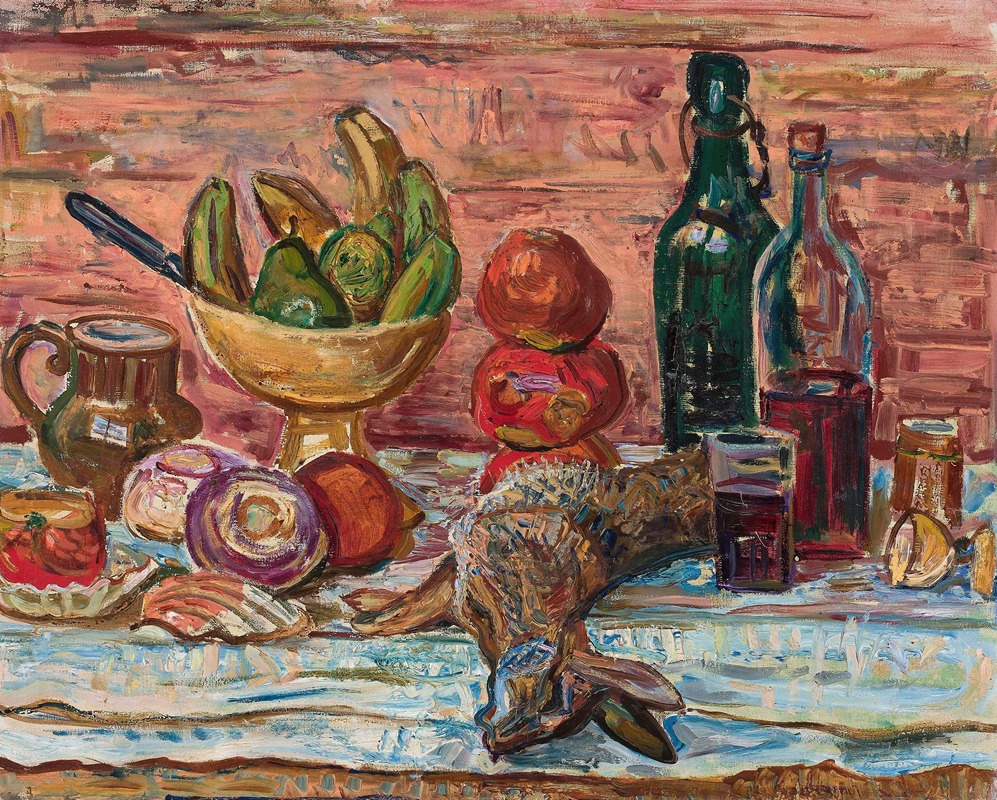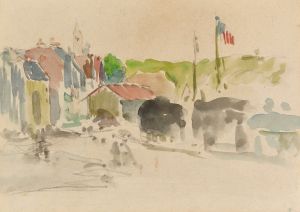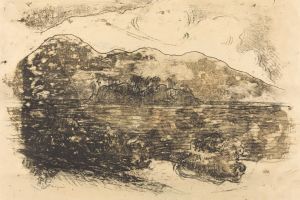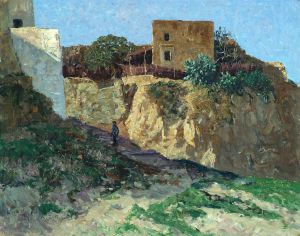
Island of love
A hand-painted replica of Zygmunt Waliszewski’s masterpiece Island of love, meticulously crafted by professional artists to capture the true essence of the original. Each piece is created with museum-quality canvas and rare mineral pigments, carefully painted by experienced artists with delicate brushstrokes and rich, layered colors to perfectly recreate the texture of the original artwork. Unlike machine-printed reproductions, this hand-painted version brings the painting to life, infused with the artist’s emotions and skill in every stroke. Whether for personal collection or home decoration, it instantly elevates the artistic atmosphere of any space.
Zygmunt Waliszewski was a Polish painter known for his contributions to the interwar period art scene in Poland. Born in 1897 in Saint Petersburg, Russia, Waliszewski moved to Poland after World War I and became an influential figure in the Polish avant-garde movement. His works are characterized by vibrant colors, dynamic compositions, and a blend of various artistic influences ranging from Post-Impressionism to Expressionism.
One of his notable works is "Island of Love," a painting that exemplifies his unique style and thematic interests. Created during a period when Waliszewski was deeply engaged with the themes of mythology and romanticism, "Island of Love" reflects his fascination with idyllic and fantastical landscapes. The painting is known for its vivid use of color and imaginative depiction of a serene, otherworldly setting.
"Island of Love" showcases Waliszewski's skill in creating a dreamlike atmosphere. The composition is filled with lush, vibrant colors that evoke a sense of enchantment and wonder. The painting depicts an island surrounded by calm waters, with figures that appear to be engaged in leisurely activities, possibly alluding to themes of love and harmony. The use of light and shadow in the painting adds depth and dimension, enhancing the overall ethereal quality of the scene.
Waliszewski's work often drew inspiration from a variety of sources, including Polish folklore, classical mythology, and contemporary European art movements. His ability to synthesize these influences into a cohesive and original style is evident in "Island of Love." The painting reflects his interest in exploring the boundaries between reality and imagination, a common theme in his oeuvre.
During his career, Waliszewski was associated with several art groups, including the Formists and the Kapists, which were instrumental in shaping the modern art landscape in Poland. His work was exhibited in numerous exhibitions, both in Poland and internationally, earning him recognition as a leading figure in Polish modernism.
"Island of Love" is a testament to Waliszewski's artistic vision and his ability to convey complex emotions through his art. The painting continues to be appreciated for its aesthetic beauty and its contribution to the development of modern art in Poland. Today, Waliszewski's works, including "Island of Love," are held in various art collections and museums, where they continue to inspire and captivate audiences with their timeless appeal.
Zygmunt Waliszewski's legacy as an artist is marked by his innovative approach and his dedication to exploring new artistic frontiers. "Island of Love" remains a significant piece within his body of work, reflecting his mastery of color, composition, and thematic exploration.


















